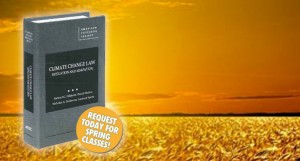The EPA kept busy over the summer months, spearheading various regulatory initiatives in an effort to curb the detrimental effects of climate change.
In early May, the EPA issued its final rule setting GHG emission thresholds for stationary sources regulated under the Clean Air Act permitting programs. (Click to view Final GHG Tailoring Rule) The new emission thresholds define when permits under the New Source Review Prevention of Significant Deterioration (PSD) and title V Operating Permit programs are required for new and existing industrial facilities. (Click to view Fact Sheet on Rule) The rule seeks to streamline the permitting requirements and requires all facilities responsible for nearly 70% of the national GHG emissions(such as power plants, refineries, and cement production facilities) to obtain both PSD and Title V permits. Essentially, the rule is an attempt to “tailor” the CAA permit programs to avoid an enormous increase in the volume of facilities applying for permits – flooding State, local, and tribal permitting authorities with paperwork and subsequently detracting from the programs focus of regulating air pollution. The new requirements will be introduced in two steps, with the first beginning January 2, 2011. Step 1 will run from January 2011 until June 30, 2011 and the new GHG emission thresholds will only apply to existing stationary sources that are currently subject to CAA permit requirements. Step 2 will begin in July 2011 and end on June 30, 2013. The significance of Step 2 is that for the first time ever, operating permit requirements will apply to sources based on their GHG emissions even if they would not apply based on emissions of any other pollutant.
Next, on July 9th, the EPA made a call for public comment and information on approaches to accounting for GHG emissions from bioenergy and other biogenic sources to supplement its final GHG tailoring rule. (Click to view Call for Information) Facilities using forest or agricultural products for energy production, wastewater treatment, livestock management, and landfills all involve the decomposition of biological material. With decomposition comes generation of large amounts of GHGs with the potential to affect emission thresholds under the recent final rule addressing CAA permitting programs. Data and recommendations gathered from this Call for Information will be beneficial in EPA’s attempt to track emissions and regulate accordingly.
In August, the EPA proposed two rules to ensure that businesses planning to build new, large facilities or make major expansions to existing ones will be able to obtain New Source Review Prevention of Significant Deterioration (PSD) permits that address greenhouse gases (GHG). (Click for August Proposed Rules Fact Sheet) The two proposals are limited to providing assistance to states that develop their own programs for issuing PSD permits by permitting the EPA to gap fill State Implementation Plans when it comes to regulating sources under the new GHG tailoring rule until the State is able to make necessary changes to its permitting program. The 1st proposal addresses a SIP call to ensure that all states with permitting authority will begin to include the new GHG thresholds. The 2nd rule proposes that a federal implementation plan (FIP) that would apply in any state that is unable to submit, by its specified deadline, a SIP revision to ensure that the state has authority to issue permits under the PSD program for GHG sources. By applying an interim FIP, the EPA attempts to avoid any delay in the construction of new business, which may result in the possible economic growth in that state.
Lastly, EPA made a proposal to addresses issues related to when pre-construction permitting requirements under the New Source Review (NSR) permitting program would transition from the 1-hour to the 8-hour National Ambient Air Quality Standards for ozone. (Click to view Proposed Pre-Construction Rule) EPA attempts to assure that air quality improvements under EPA’s National Ambient Air Quality Standards (NAAQS) for 1-hour ground-level ozone are retained as areas work to meet the more health protective 8-hour ozone standards set in 1997. In addition, EPA addresses its CAA interpretation that areas attaining the 8-hour ozone standards should implement the NSR Prevention of Significant Deterioration permitting programs regardless of their status relative to the revoked 1-hour ozone standards. (Click to view Fact Sheet)
This overview of EPA’s proactive initiative to address climate change is in no way an exhaustive list. In addition to final and proposed rules, the EPA recently held a public hearing on the Federal Implementation Plan for permitting under the CAA for GHG emissions on September 14th, 2010. In the coming months, as more information and data addressing GHG’s and their effect on our climate becomes available, we can expect the EPA to continue their push to address this problem at the federal level.

